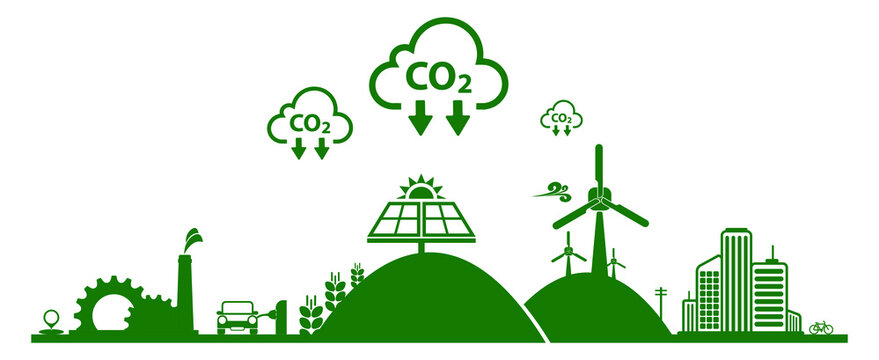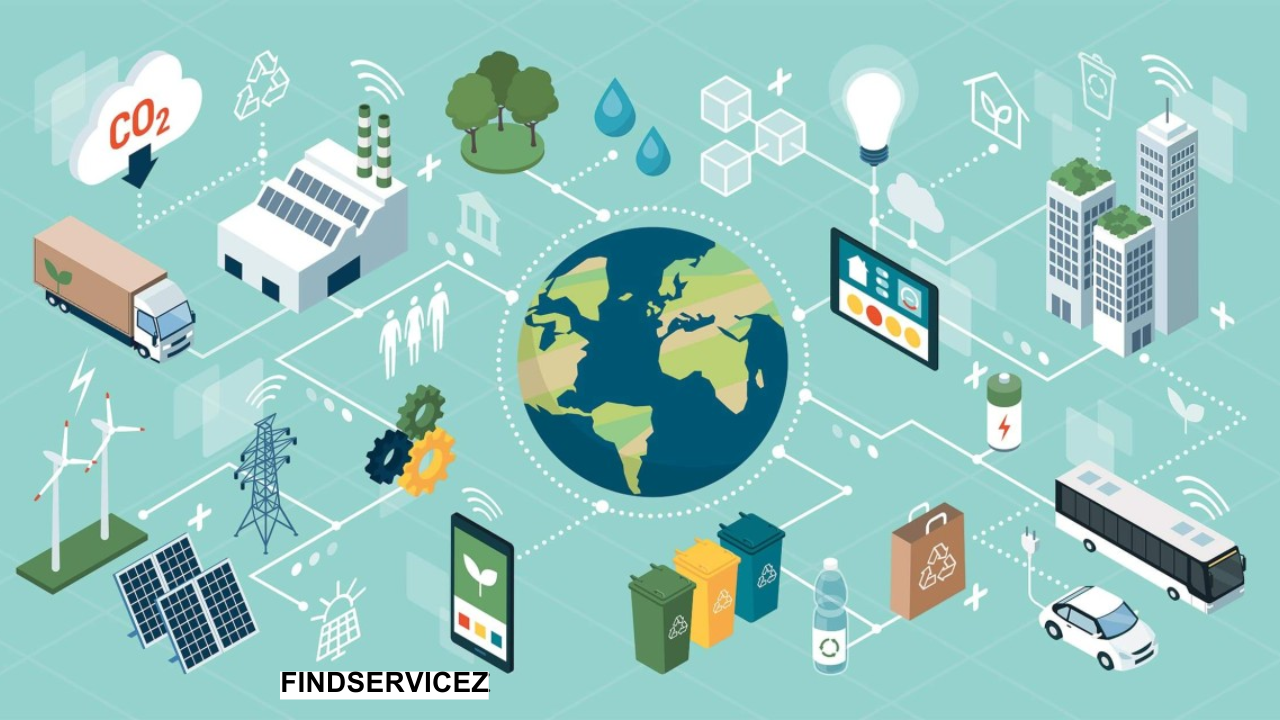As climate change continues to be one of the most pressing global challenges, reducing carbon footprints has become crucial for both individuals and industries. While major changes in industries and national policies are essential to reducing carbon emissions, individuals can also make significant contributions. One effective way is by incorporating green energy gadgets into daily life. These gadgets not only reduce carbon footprints but also promote sustainability, allowing users to power their devices while minimizing their environmental impact. From solar-powered chargers to energy-efficient smart home devices, the range of green energy gadgets available today can help you reduce your reliance on fossil fuels and lower your carbon emissions.
In this article, we will explore several green energy gadgets that can help individuals reduce their carbon footprint and lead a more sustainable lifestyle.
1. Solar-Powered Chargers
One of the most practical and widely adopted green energy gadgets is the solar-powered charger. Solar power harnesses the energy of the sun to provide renewable electricity, making solar chargers a clean and eco-friendly option for powering mobile devices, tablets, and even laptops.

Benefits of Solar Chargers:
- Renewable energy source: Solar chargers run on sunlight, an abundant and free source of energy.
- Portability: Many solar chargers are designed to be portable and can be used while traveling, camping, or hiking, providing flexibility in powering devices on the go.
- Cost-effective: After the initial purchase, solar chargers have no ongoing electricity costs, making them more cost-effective in the long term.
Several high-quality solar-powered chargers are available in the market, each varying in efficiency and power output. Popular brands such as Goal Zero, Renogy, and Anker offer compact, efficient models that can help reduce electricity consumption from the grid.
2. Smart Thermostats
Heating and cooling account for a significant portion of energy consumption in households, contributing heavily to carbon emissions. Smart thermostats, such as those from Nest or Ecobee, provide an intelligent solution to reducing energy use without sacrificing comfort.
How Smart Thermostats Help Reduce Carbon Footprints:
- Energy savings: Smart thermostats learn your habits and adjust heating and cooling settings automatically, ensuring that energy is not wasted when you’re not at home or asleep.
- Remote control: Many smart thermostats allow you to adjust temperature settings remotely via mobile apps, so you can ensure energy is saved while you’re away.
- Energy usage tracking: Smart thermostats can track and provide reports on energy consumption, allowing users to identify inefficiencies and optimize their systems.
Gadgets That Promote Recycling and Waste Management: A Comprehensive Guide
By efficiently managing the heating and cooling needs of a home, smart thermostats can significantly reduce energy consumption and lower heating-related carbon emissions.
3. Energy-Efficient LED Bulbs
Switching out traditional incandescent or fluorescent bulbs for energy-efficient LED bulbs is one of the easiest ways to cut down on electricity usage and reduce your carbon footprint. LED bulbs use much less energy than traditional bulbs and last longer, which ultimately saves money while being eco-friendly.
Benefits of LED Bulbs:
- Energy savings: LED bulbs use about 75% less energy than traditional incandescent bulbs.
- Long lifespan: With an average lifespan of up to 25,000 hours, LEDs last 25 times longer than incandescent bulbs, reducing the frequency of replacements.
- Lower greenhouse gas emissions: The reduction in energy consumption leads to a decrease in greenhouse gas emissions, especially in regions where electricity is generated from fossil fuels.
LED lighting is widely available, including options for outdoor, decorative, and specialized lighting, providing users with versatile, energy-saving alternatives for both home and office environments.
4. Solar-Powered Outdoor Lights
Solar-powered outdoor lights are another excellent gadget for reducing your carbon footprint, especially if you need to illuminate outdoor areas like gardens, walkways, or patios. These lights harness solar energy during the day and store it in batteries to provide light after sunset, eliminating the need for electricity.
Advantages of Solar Outdoor Lights:
- Energy independence: Solar lights rely entirely on solar energy, reducing your dependency on grid power.
- Ease of installation: Most solar-powered outdoor lights come with easy installation and no wiring, making them cost-effective for installation and maintenance.
- Sustainability: By using the sun as a power source, these lights reduce your carbon footprint and contribute to a cleaner environment.
Whether it’s landscape lighting, security lights, or decorative garden lights, solar-powered lighting is an environmentally friendly and cost-effective solution for homes and businesses alike.
5. Smart Power Strips
Power strips are essential for households with numerous electronic devices. However, even when your devices are turned off, many appliances still draw power, a phenomenon known as “phantom load.” Smart power strips can help you combat this issue.

Features of Smart Power Strips:
- Automatic turn-off: Many smart power strips feature an automatic turn-off function, cutting power to devices when they are in standby mode.
- Remote monitoring and control: Some models offer smartphone apps that allow you to monitor and control the power usage of devices plugged into them.
- Energy consumption tracking: These smart power strips provide data on the energy usage of connected appliances, helping you identify opportunities for further energy savings.
By eliminating standby power consumption, smart power strips help reduce unnecessary energy use, thereby decreasing carbon emissions associated with electricity production.
6. Green Gadgets for Water Conservation
Water conservation is a critical aspect of environmental sustainability. Several gadgets on the market help you reduce water usage, which also translates into reduced energy consumption for water heating and treatment.
Examples of Water-Saving Gadgets:
- Low-flow showerheads: These reduce the amount of water used in showers, helping to conserve water and energy.
- Smart irrigation systems: Devices like the Rachio Smart Sprinkler Control System can monitor weather patterns and soil moisture levels to ensure that water is only used when necessary.
- Water-saving faucets and aerators: Faucet aerators reduce the water flow rate without compromising the pressure, saving water and lowering energy costs associated with water heating.
Water conservation gadgets can help reduce water and energy consumption, thereby lowering your carbon footprint in ways that go beyond just electricity.
7. Electric Cars and EV Chargers
Transportation is a major source of carbon emissions worldwide, and reducing personal vehicle emissions is one of the most effective ways to cut down on an individual’s carbon footprint. Electric vehicles (EVs) are gaining popularity as an environmentally friendly alternative to traditional gasoline-powered cars.
The Best Solar Chargers for Your Devices in 2026: A Comprehensive Guide
How EVs Reduce Carbon Emissions:
- Zero tailpipe emissions: EVs produce no direct emissions from their engines, dramatically reducing the carbon footprint compared to traditional vehicles.
- Charging efficiency: When paired with solar power systems and home chargers, electric cars can operate with little to no reliance on grid electricity, further reducing their environmental impact.
- Reduced fossil fuel dependence: By reducing the demand for gasoline and diesel, EVs contribute to the transition to sustainable and clean transportation.
Electric cars, such as those offered by Tesla, Nissan, and Chevrolet, are now available in various price ranges, and the availability of EV chargers for home installation further supports the shift to electric vehicles.
8. Home Energy Management Systems (HEMS)
Home Energy Management Systems (HEMS) are devices designed to optimize energy use in residential buildings. These systems integrate various energy-saving technologies and provide insights into how energy is consumed across a home.
How HEMS Help Reduce Energy Consumption:
- Monitoring energy use: HEMS track and display energy consumption, allowing homeowners to spot patterns and areas where energy is being wasted.
- Integration with smart devices: Many HEMS can connect to smart thermostats, solar panels, and smart appliances to ensure that energy use is as efficient as possible.
- Optimization algorithms: These systems often include algorithms that learn optimal energy usage patterns based on user habits and weather conditions.

By providing insights and automating energy management, HEMS help homeowners reduce their reliance on energy-consuming appliances and cut down on overall energy consumption.
9. Portable Air Conditioners and Energy-Efficient Fans
Cooling your home during the summer months can be energy-intensive, but opting for portable air conditioners and energy-efficient fans can significantly reduce energy consumption.
Why Choose Energy-Efficient Cooling Devices?
- Portable air conditioners: These devices are smaller, often more energy-efficient, and can be used to cool specific rooms or areas, saving energy compared to central air conditioning systems.
- Ceiling and floor fans: Fans are an energy-efficient way to circulate air and provide cooling without the need for heavy energy consumption that air conditioners require.
- Smart cooling devices: Smart fans and air conditioners can be controlled remotely and optimized to reduce energy waste while keeping living spaces comfortable.
These energy-efficient gadgets help maintain comfort while minimizing electricity usage and reducing carbon emissions.
10. Eco-Friendly Smart Appliances
Many modern home appliances are now designed with energy efficiency in mind. Eco-friendly versions of major appliances such as refrigerators, washing machines, and dishwashers use less energy and water, lowering household carbon emissions.
Features of Eco-Friendly Smart Appliances:
- Energy Star certification: These appliances meet high-efficiency standards, ensuring that they use minimal energy to perform their tasks.
- Automation: Many smart appliances adjust their usage based on user behavior or environmental factors. For example, a smart washing machine may optimize water usage depending on the size of the load.
- Long lifespan and low maintenance: Energy-efficient appliances are often designed to last longer, reducing the frequency of replacements and preventing e-waste.
Investing in eco-friendly appliances can significantly lower your overall carbon footprint while also saving you money on utility bills.
Integrating green energy gadgets into your life is an effective way to reduce your carbon footprint while enjoying the benefits of modern technology. Whether you are reducing your electricity usage with energy-efficient appliances, harnessing the sun’s power with solar chargers, or driving an electric vehicle, every small change adds up to a significant impact on the environment.
By adopting these green energy gadgets, you contribute to the larger effort to combat climate change and create a more sustainable world for future generations. Every action matters, and the right gadgets can help you make that important difference.
